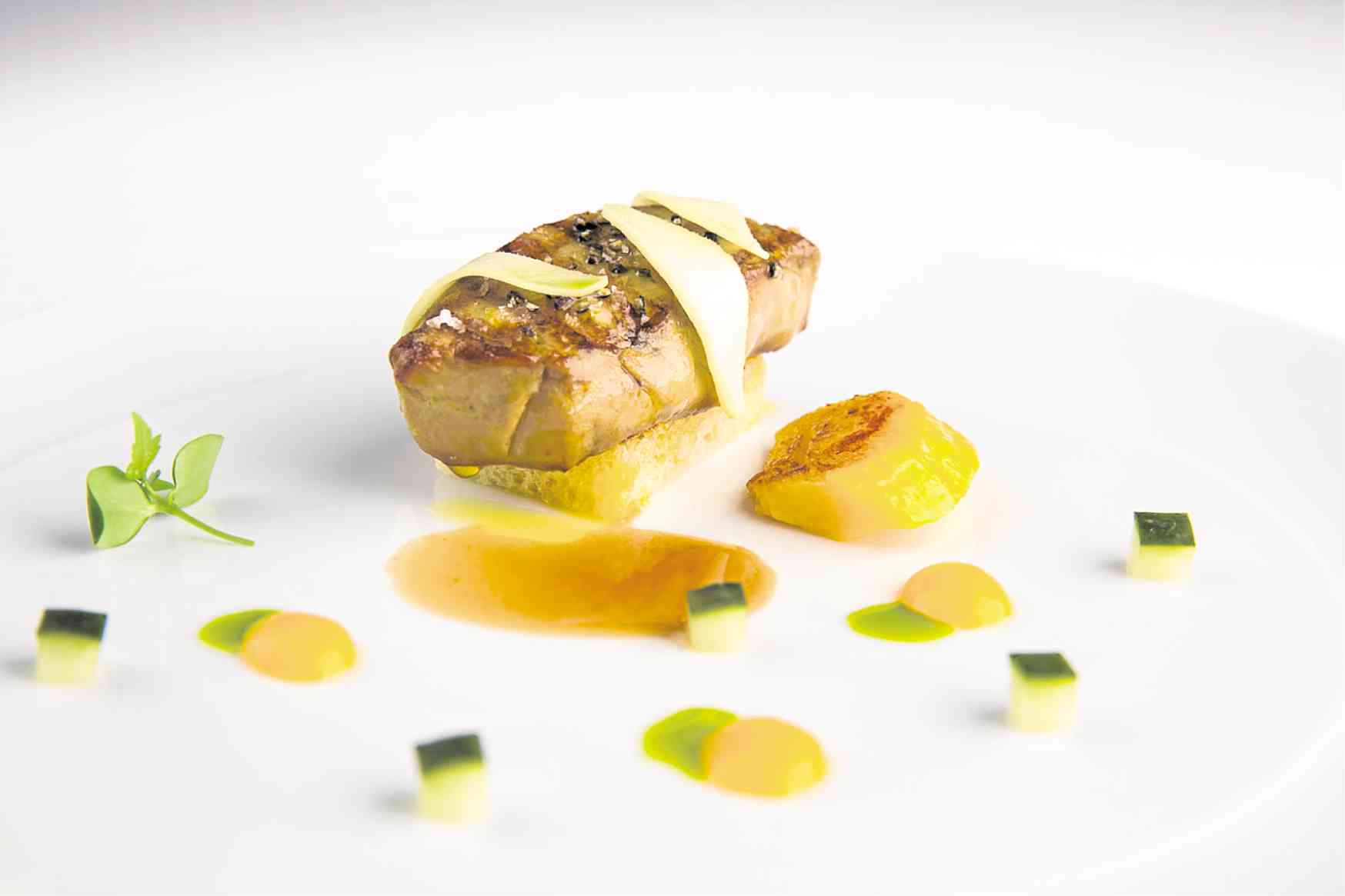
Why has Frederic Thevenet, who’s in charge of The Tasting Room at the City of Dreams, not attracting more attention?
Metro Manila’s dining scene is more varied than it has ever been. At least two establishments have a good chance of making it on the coveted Asia’s 50 Best list next year. And there’s a handful of restaurants where you can escape the exhausting extremes of the country, and pretend, at least for the duration of the meal, that all’s right with the world.
Amid all this, the old-fashioned definition of a fine-dining restaurant—the grand restaurant of a posh hotel—still has its place. Or does it?
Old Manila at the Peninsula is trying very hard to shake its association with, well, old people, as much as it can without changing its name to New Manila.
Shangri-La at the Fort has opened a slew of restaurants, all of which are expensive, some are good, but none of them in “fine dining” in the traditional sense of plush carpets and starched napkins.
Prince Albert and the Tivoli Grill now live on only in sainted memory, and with their loss, the hotel restaurant as the best place in town to take your date seemed to be on the wane.
This leaves us with the question of where you should go should you want to propose marriage or celebrate an anniversary.
To have privileged seats in the opening of the hottest new ramen franchise from Japan is very impressive, but sitting between rows of people slurping tonkatsu broth lacks a certain je ne sais quoi for the solemnity of such an occasion.
Thevenet has worked with some of my favorite chefs: Guy Savoy when his two-star restaurant was trying to make it, Pierre Gagnaire, Alain Ducasse, Guy Martin (Le Grand Vefour). This reads like a list of restaurants I would visit if I had only a few months to live, only missing out on Bernard Pacaud’s L’Ambroisie, where I would like to dine on the night I die.
Evolving
But the world of French haute cuisine is also different now. In the 1990s, in culinary school, the MOF (Meilleur Ouvrier de France) chefs with their striped collars spoke disdainfully of “poisson cru—le sushi” that the very strange Japanese ate. Today’s Paris is more open, more cosmopolitan.
The outposts of French cuisine, such as Le Normandie in Bangkok, were once so retrograde that they seemed to be caught in a time warp. Today, Le Normandie offers “modern French” cuisine, as does Amber in Hong Kong, which is leading the way for the French restaurant overseas with regional ingredients, French but inflected with local flavors and ideas.
It’s in that vein where Thevenet operates.
Coconut, sea urchin and “suahe shrimp” (actually quite nice) make an appearance on the menu. You can get A7 wagyu on the à la carte menu, because every restaurant beside a casino has to have crazy expensive wagyu for the high rollers to celebrate with (or eat while they play).
But for the main course, Thevenet opted for “pig breast,” also known as pork belly—a brave choice.
As is the case with any tasting menu, some dishes worked better than others. I found the pork belly too fatty, and a béarnaise-like sauce to go with it seemed like overkill.
But the broccoli ice cream with ikura (salmon caviar) was inspired, as was the trio of mussel soup, fennel salad, and melange of fennel and mussels with a bit of crisp baguette— one flavor echoing another in a triangle, just as the textures moved from minced to a coarse velouté to a smooth jelly.
Culinary ‘round’
In music, this kind of overlapping is known as a “round,” from the Latin “rondellus.” Chefs often use it unconsciously or instinctively, but in this instance, it was perfectly orchestrated and playful.
And there was much about fine dining I had missed that was there: formality of language; waiters in jacket and tie; sommeliers; and after the meal, a cart of bright green herbs in pots, from which they could snip little trimmings off to make a tisane.
Alas, I feel that Thevenet has caught Manila at an odd time. There is a race to be as local as possible, and the degustation menu of regionally inflected French cuisine is not local enough—or too French, which is the same thing put another way.
Thevenet has fallen in between two schools: It is not foreign enough, nor is it local enough.
This is the most compelling reason I can think of why The Tasting Room restaurant is not getting more attention. Plus, of course, the price (at this point I must reveal that we ate courtesy of the establishment).
If this were an independent restaurant at Bonifacio Global City and I were a stockholder, I would ask that Thevenet pick a lane—cash in on the all-things local trend, or go back to a more classical French menu (something which is sorely lacking in Manila, after all).
But being at The Tasting Room gives this Thevenet the luxury of time and creativity, which is why so much innovation happened in hotels. (Even the bistronomie trend was born, ultimately, in the old kitchen of Les Ambassadeurs at the Crillon).
The current menu at Thevenet’s dining room speaks a language that was born of the best Paris restaurants. From that language will be crafted a poem that is still in the making.
I look forward to the evolution of Frederic Thevenet at The Tasting Room. –CONTRIBUTED
The Tasting Room, Nuwa, City of Dreams Manila; tel. 6917789